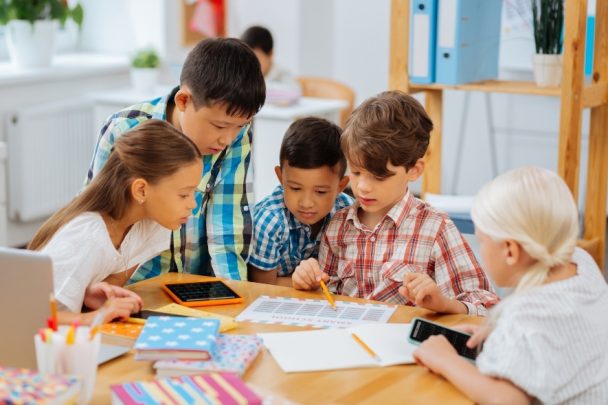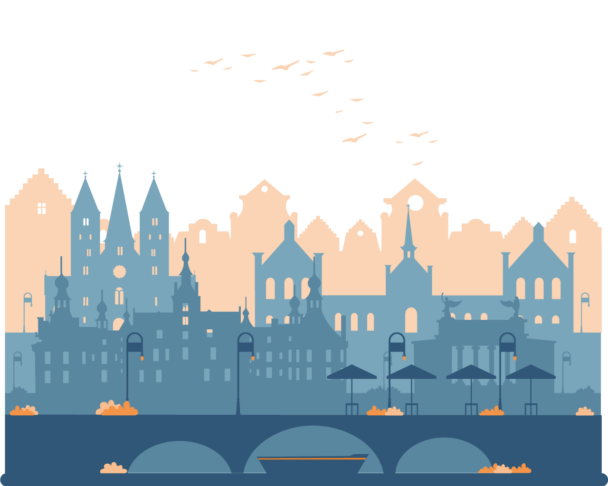Description
In order to prepare students for the complexity of their future life and work environment, the 21st-century classroom should transform traditional teacher-centered lecturing into more student-centered learning.
In order to promote such transformation, a meaningful strategy is reconceiving the physical environment where learning takes place. But how can we change the learning environment to adapt it to the most recent methodologies for teaching and learning?
According to “built pedagogy,” the physical space shapes students’ learning experiences and behaviors by tacitly embodying specific pedagogical practices. In a traditional classroom, for example, the teacher stands in front of the board, which represents the authority and the center of the learning process.
Students, instead, are required to listen to the teacher while sitting in their place in orderly rows. This setting reinforces a teacher-centered pedagogy that hinders the students’ agency and participation.
The challenges of today’s education require such a classroom setting from the industrial era to change. Today, schools need to transform the traditional teacher-centered space into a learning environment that promotes communication and collaboration, experimenting, and sharing, in the presence of ICTs. Moreover, at times, the classroom environment should also become a quiet space for reflection, self-directed learning, and the incubation of creative ideas.
The course will help you rethink your current classroom setting and practice with new ideas to transform it. No unique solution works in every time and space, thus the core of learning space design is to understand where, when, and how to start introducing simple, small changes that can make a big difference.
In the course, you will discover the two main research-based principles of learning space design, i.e., flexibility and hybridity, and discuss many examples of their application across European schools. You will start exploring ways to adapt your classroom settings to create new, flexible learning environments that promote student participation and cater to learners’ diversity.
The course includes collaborative lab sessions to design a learning space for your context. The hands-on experience will inspire you with a boost of ideas and enable you to visualize practical and innovative 21st-century classroom settings. In time, you will discover how even small changes to the existing classroom and school spaces can bring important impacts on teaching and learning.
By the end of the course, you will take away fresh ideas to create an innovative and inclusive learning space that aligns with the pedagogical vision of the 21st century. By conceiving the pedagogical value of the classroom space, you will dispose of a new tool to foster a student-centered culture in your school.
What is included
Learning outcomes
The course will help the participants to:
- Discover how learning space shapes learning and teaching behaviors;
- Understand the linkage between the physical space and the teaching and learning that occurs in it;
- Get familiar with the two main principles of 21st-century classroom design: flexibility and hybridity;
- Discuss many case studies of learning space transformation in European schools;
- Analyze the current learning space settings of their classrooms and school;
- Design collaboratively the transformation of their learning and teaching space.
Tentative schedule
Day 1 – Introduction to the course, space, and learning
- Introduction to the course, the school, and the external week activities;
- Icebreaker activities;
- Presentations of the participants’ schools.
Space and learning
- The paradigm shift of learning in the 21st century: Teacher-centered vs. Student-centered learning;
- Built pedagogy: how does space shape learning behaviors and support learning?
- Illustration of your current classroom setting;
- Evaluation of the linkage between your pedagogical approaches and the classroom settings.
Day 2 – The flexibility of the learning space
- 5 elements of pedagogically versatile learning environments;
- The Model of New Generation Learning Spaces (NGLS): Multi-focal environment with flexible furniture;
- Designing spatial settings to facilitate active and participative learning;
- Several case studies from the Future Classroom Lab of European Schoolnet.
Day 3 – The hybridity of learning space
- The Model of Hybridized Personal Learning Environment (HPLE): mediated and personalized learning space;
- Differentiating learning zones to support personalized learning;
- Case studies from Finland “Kaksio 56” and other European countries.
Day 4 – A participative approach to design learning space
- The importance of getting the space users involved in the design process;
- When and how to open up the conversation with students and fellow teachers to get them involved in designing the new setting?
- Potential challenges and obstacles to bring forth transformation in your context.
Day 5 – Collaborative lab
- We will design together a learning space that suits the learning needs and pedagogical practices of you and your students in the 21st century.
Day 6 – Course closure & cultural activities
- Course evaluation: round-up of acquired competencies, feedback, and discussion;
- Awarding of the course Certificate of Attendance;
- Excursion and other external cultural activities.







